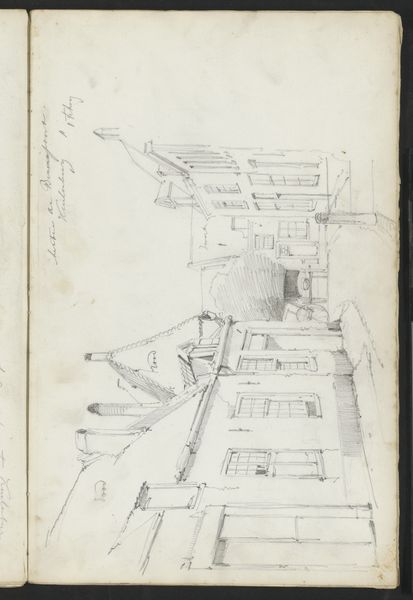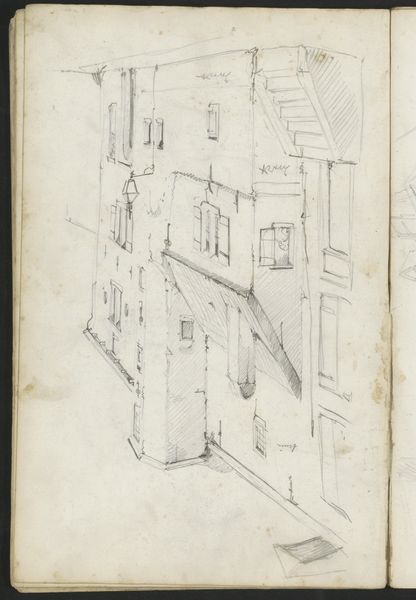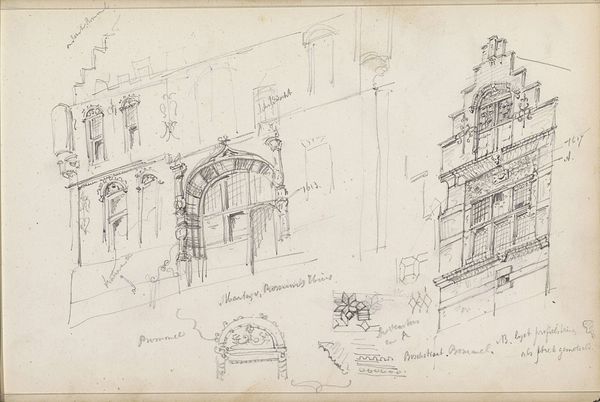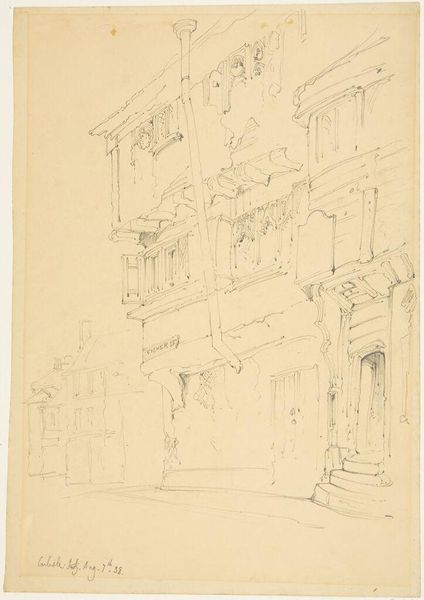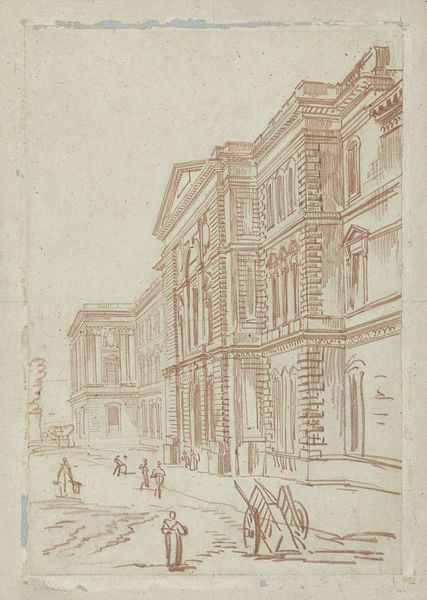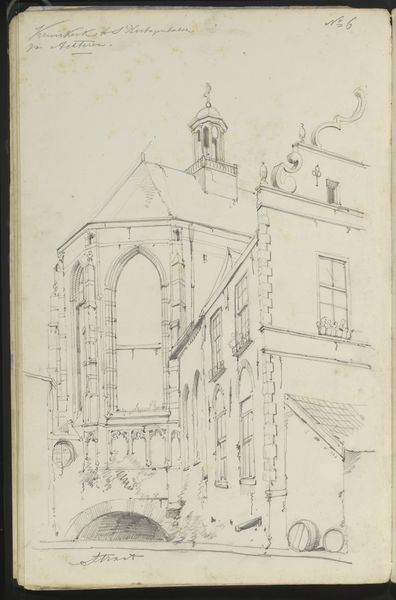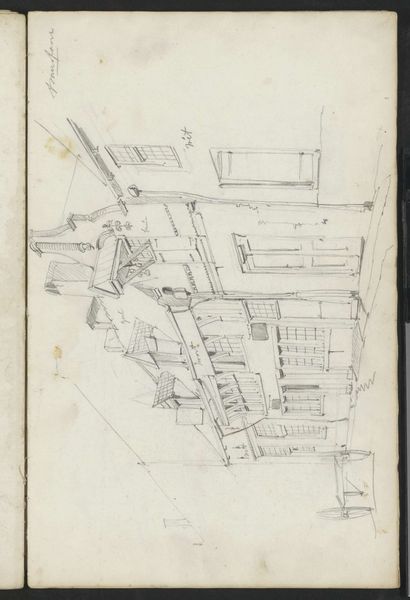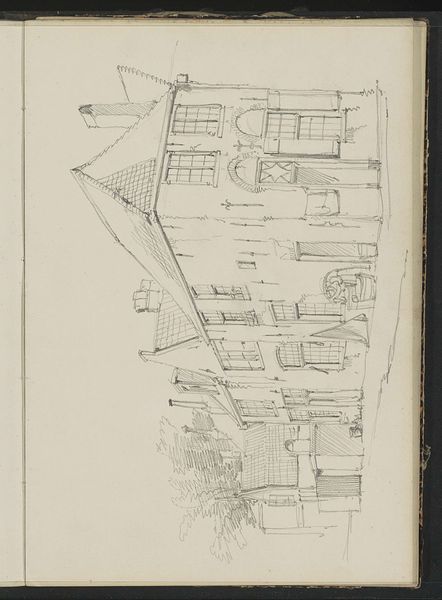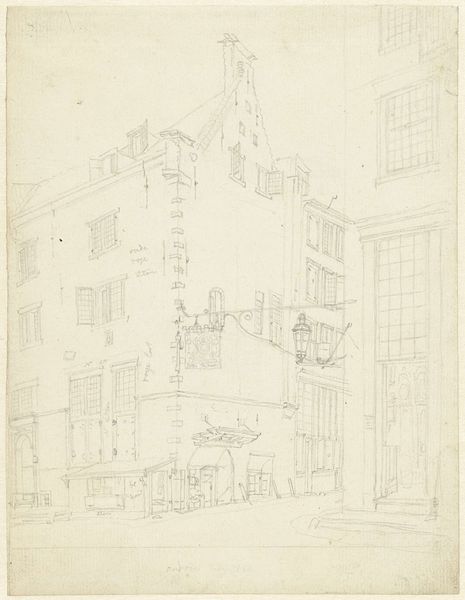
drawing, pen
#
drawing
#
pen sketch
#
pen
#
cityscape
#
street
#
realism
Copyright: Rijks Museum: Open Domain
Editor: Here we have "Achterstraat te Culemborg," a pen drawing made sometime between 1849 and 1895 by Willem Koekkoek. There's something captivating about the architectural detail, considering it's just a pen sketch. How do you interpret this work, focusing on its visual aspects? Curator: Let's begin by observing how the artist utilized the pen to generate a sense of depth. Notice the intricate network of lines—hatching and cross-hatching—applied to articulate the play of light and shadow upon the building's facade. The texture itself, achieved purely through line, creates a certain atmospheric quality, does it not? Editor: Yes, I see that. The density of lines really defines the shadows, making the architectural elements stand out. Is there any theoretical concept you find particularly useful for understanding the composition? Curator: Semiotics offers a lens through which we may understand the architectural elements, such as the arched windows and gabled roof, as signs carrying cultural and historical meaning. Their arrangement and proportion within the composition, furthermore, contribute to an overarching structural narrative, dictating how we perceive the represented space. The subtle slant of the street also leads our eye and subtly disrupts an otherwise strictly geometric layout, creating a compelling tension. What is your assessment of that effect? Editor: I appreciate how the tilted perspective challenges the rigidity. Considering all these aspects, I think I understand better how even a simple sketch can have significant depth through form and technique. Curator: Indeed. It's through analyzing these intrinsic qualities that we can unlock deeper layers of understanding. Focusing on structure allows appreciation beyond subject.
Comments
No comments
Be the first to comment and join the conversation on the ultimate creative platform.
